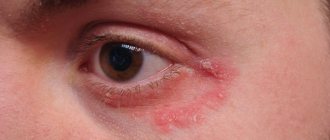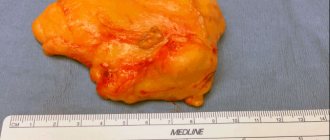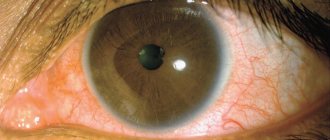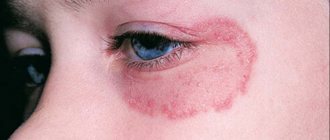- Pimple on the eyeball: causes
- 4 main causes of eye bumps:
- Diagnostics
- Signs and symptoms of acne inflammation on the eyeball
- SUN PROTECTION TIPS
- Treatment of acne on the eyeball
- Treatment of acne around the pupil
A pimple on the eyeball is usually caused by the growth of conjunctivitis, or the clear ocular membrane covering the white part of the eye. Depending on the color of the bump, its shape, and where it is located on the eye, there are a number of conditions that can cause bumps on the eyeball.
Pimple on the eyeball: causes
Ultraviolet radiation from the sun is the main cause of pimples on the eyeball, and frequent exposure to dust and wind also appear to be risk factors for their appearance. Dry eye disease can also be a contributing factor to the growth of eye inflammation.
Pimples on the eyeball and near the pupil are more common in middle-aged or older people who spend a lot of time in the sun. But they can also occur in young people and even children, especially those who are exposed to the sun frequently without sunglasses or a hat.
To reduce your risk of getting a pimple, it's important to wear sunglasses outdoors, even on cloudy days, because the sun's ultraviolet rays penetrate the cloud cover. For best protection, choose sunglasses with quality lenses that block more sunlight than regular glasses.
How does it manifest?
Redness of the eyelid is one of the first manifestations of the disease that worries a person.
White pimples are mainly localized at the edge of the cornea. Often neoplasms develop in the protein membranes of both visual organs. The first signs of the disease are redness of the skin of the eyelids and sharp, cutting pain. Gradually, the patient's tissue swelling increases due to impaired lymph flow, and an elastic neoplasm of a yellowish-white hue is formed. During the process of maturation, the wen increases in size and then bursts. The leakage of purulent masses is a normal process. In the future, the pimple will shrink and disappear.
Signs and symptoms of acne inflammation on the eyeball
For most people, eye inflammations such as conjunctivae or pingueculae do not cause many symptoms. These symptoms are usually associated with disruption of the tear film. Since pingueculae are increased inflammation on the eyeball, the natural tear film can be unevenly distributed on the surface of the eye around it, causing dryness. This can cause symptoms. dry eye such as burning sensation, itching, blurred vision and foreign body sensation.
Another symptom of pinguecula is the appearance of extra blood vessels in the conjunctiva covering the capillaries, causing red eyes.
In some cases, red pimples on the eyeball may become swollen and inflamed. This is called pingueculitis. Irritation and redness of the eyes from pingueculitis usually occurs due to overexposure to sunlight, wind, dust, or extremely dry conditions.
Eye diseases in humans: list, symptoms
The reason for this is many factors. For example, the rapid development of computer technology and the deterioration of the environmental situation every year. Next, we will consider the most common diseases, and also highlight their characteristic symptoms.
Pathology of the optic nerve
Glaucoma
- a chronic disease. Due to increased pressure inside the eyes, optic nerve dysfunction occurs. As a result, vision decreases, which may disappear in the future. The disease progresses very quickly, so the patient risks completely losing his vision if he delays going to the doctor. Signs: impaired lateral vision, black spots, “hazy” images, inability to distinguish objects in the dark, colored rings appear in bright light.
Ischemic optic neuropathy
– circulatory disorders in the intraocular or intraorbital region. Symptoms: decreased visual acuity, appearance of “blind” spots in some areas. Reducing viewing angle.
Ischemic neuropathy
Neuritis
- infection. An inflammatory process in the optic nerve is characteristic. Signs: loss of sensitivity in the area around the eye, pain, weakening of the muscles associated with the optic nerve.
Nerve atrophy
– a disease characterized by dysfunction of arousal conduction. Color perception and viewing angle are impaired. Vision decreases and a person can become completely blind.
Nerve atrophy
Pathology of the eye orbit, eyelids, lacrimal canals
Blepharitis
- inflammation that occurs along the edges of the eyelids. Symptoms: swelling of the tissue, accompanied by burning and redness. The patient feels as if a speck has gotten into his or her eye. There is itching and characteristic discharge. Bright light is difficult to perceive, tearing, pain. Dry eyes and peeling of the eyelid margins may occur. After sleep, purulent scabs form on the eyelashes.
Blepharitis
Cryptophthalmos
- a common disease in which the edges of the eyelids fuse together. This causes the palpebral fissure to narrow or even disappear.
Lagophthalmos
– a pathology characterized by a violation of the closure of the upper and lower eyelids. As a result, some areas remain open all the time, including during bedtime.
Turn of the century
– the place where eyelashes grow is turned towards the eye socket. This creates severe discomfort due to rubbing and irritation of the eyeball. Small ulcers may form on the cornea.
Turn of the century
Coloboma of the century
- disturbance in the structure of the eyelids. Usually occurs along with other morphological defects. For example, cleft palate or cleft lip.
Swelling of the eyelid
– localized accumulation of excess fluid in the tissues around the eyelid. Symptoms: local redness of the skin, discomfort. Eye pain worsens when touched.
Swelling of the eyelid
Blepharospasm
- looks like a convulsive contraction of the facial muscles, as if the person is quickly squinting his eyes. Not controlled by the will of the patient.
Ptosis
– drooping of the upper eyelid. Pathology is classified into several subtypes. In some cases, the eyelid droops so much that it completely covers the eyeball.
Ptosis
Barley
– an infectious disease of an inflammatory nature that occurs with pus discharge. Signs: swelling of the edges of the eyelids, redness and peeling. Pressing is accompanied by severe pain. Discomfort (feeling of a foreign object in the eye) and lacrimation are common. The acute form is characterized by signs of intoxication - loss of strength, fever, headache.
Barley
Trichiasis
– improper eyelash growth. The danger is that pathogens can easily enter the eyes. This provokes inflammation, conjunctivitis and other problems.
Dacryocystitis
– an infection of the tear duct that causes inflammation. There are several types of pathology: acute, chronic, acquired, congenital. Symptoms: painful sensations, the lacrimal sac is red and swollen, suppuration of the canals and constant tearing.
Dacryocystitis
Pathology of the tear-producing system
Dacryodenitis
- damage to the lacrimal glands. It occurs due to chronic pathologies, or due to infection entering the body. If there is a disruption in the functioning of the circulatory system, the disease can take a chronic form. Symptoms: the upper eyelid becomes red and swollen. In some cases, the apple of the eye protrudes. If dacryodenitis is not treated, the inflammation spreads, ulcers form, a high temperature rises, and general malaise appears.
Dacryoadenitis
Lacrimal gland cancer
– develops as a result of abnormal activity of gland cells. Tumors can be either benign or malignant. The second group includes, for example, sarcoma. Signs: pain in the eyes and head. Associated with an increase in formation that puts pressure on the nervous tissue. In some cases, the pressure is so strong that it causes delocalization of the eyeball, making it difficult for them to move. Additional symptoms include swelling and loss of vision.
Pathology of the connective membrane of the eye
Xerophthalmia
– an eye disease during which tears are produced less than normal. There are several reasons for this: chronic inflammatory processes, various injuries, tumors, long-term use of medications. Elderly people are at risk.
Conjunctivitis
- inflammation that occurs in the conjunctival mucosa. It can be allergic, infectious and fungal. All of these varieties are contagious. Infection occurs both through physical contact and through everyday objects.
Tumors of the conjunctiva
– appearing in the coal on the inner side of the mucosa (pterygium) and forming in the area of the connection with the cornea (pinguecula).
Lens pathology
Cataract
– gradual clouding of the eye lens. The disease develops very quickly. It can affect one eye or both. In this case, either the entire lens or one part is damaged. The main category of patients is elderly people. It is this disease that can reduce vision in a very short time, even to the point of blindness. In young people, cataracts are possible due to injuries or somatic diseases. Symptoms: rapid loss of vision (this forces you to change lenses very often), inability to distinguish objects in the dark (“night blindness”), impaired color perception, eyes get tired quickly, and in rare cases, double vision.
Cataract
Lens abnormalities
– cataracts, bifaf, spherophakia, lens luxation, coloboma developing from birth.
Retinal pathology
Retinitis (retinal pigmentary dystrophy)
– a disease manifested by the occurrence of inflammation in various parts of the retina. The causes include injury to the organs of vision and prolonged exposure to sunlight. Symptoms: the normal field of vision narrows, visibility decreases, the image doubles, insufficient visibility at dusk, characteristic colored spots appear before the eyes.
Retinal detachment
– a pathology in which destruction of the retina is observed. Its inner layers begin to peel away from nearby epithelial tissues and blood vessels. In most cases it is treated surgically. Lack of treatment results in vision loss. Signs: “fog” before the eyes, distortion of the geometric shape of objects, sometimes flashes of light and bright sparks flash through.
Retinal detachment
Retinal angiopathy
– destruction of the structure of the choroid in the eyes. This disease is caused by physical trauma, high intraocular pressure, disturbances in the functioning of the central nervous system, diseases of the circulatory system (arterial hypertension), poisoning, and pathological defects in the morphology of blood vessels. Symptoms: noticeable decline in vision, blurred vision, foreign flickers, image distortion. In the most severe cases, vision loss occurs.
Retinal dystrophy
– an extremely dangerous disease that can have a wide variety of causes. The tissue of the retina of the eye dies or decreases. This can happen if qualified assistance from specialists is not provided in a timely manner.
Corneal pathology
Keratitis
– an inflammatory process that affects the cornea of the eye. As a result, clouding of the cornea and the occurrence of infiltrates. The cause may be an infection: viral, bacterial. Injuries can also trigger the development of the disease. Symptoms: lacrimation, redness of the mucous membrane of the eye, atypical sensitivity to bright light, the cornea loses its normal properties - shine, smoothness. If treatment is neglected, the infection spreads to other areas of the visual system.
Keratitis
Belmo
– formation of scar tissue on the cornea of the eye, its persistent clouding. The cause is prolonged inflammatory processes in the body or injury.
Belmo
Corneal astigmatism (keratoconus)
– degeneration of the cornea, which occurs due to increased pressure inside the eye. This leads to a change in the shape of the cornea of the eye. Symptoms: light fringe around the light bulbs, immediate decrease in vision in one of the eyes, myopia.
Keratoconus
Change in eye refraction
Myopia (myopia)
– a refractive error in the eye, in which a person has difficulty seeing distant objects. In case of myopia, the image is fixed in front of the retina. Signs: poor discrimination of distant objects, discomfort, rapid eye fatigue, pressing pain in the temples or forehead.
Myopia
Farsightedness (hypermetropia)
– a refractive error in which the image is read behind the retina, is the opposite of myopia. In this case, the patient has difficulty seeing both near and distant objects. Symptoms: very often there is blurriness before the eyes, sometimes the patient exhibits strabismus.
Farsightedness
Astigmatism
– the disease is characterized by the inability to focus light rays on the retina. Usually appears in people with physiological disorders of the visual organs: cornea, lens. Symptoms: blurred and unclear image, a person gets tired quickly, often complains of a headache; in order to see something, one has to strain the eye muscles.
Astigmatism
Other eye diseases
Nystagmus
– uncontrollable oscillatory movements of the eyeballs.
Lazy eye syndrome or amblyopia
– a pathology in which the eye, due to damage to its muscles, stops working and making movements.
Anisocoria
– difference in pupil size. Basically, it appears with all kinds of eye injuries. Involves acute sensitivity to light and decreased vision. Sometimes this pathology indicates a disruption in the functioning of one of the parts of the brain - the cerebellum.
Anisocoria
Episcleritis
- inflammation that forms in the episcleral tissue. First, redness appears near the cornea, then this area swells. Signs: feeling of discomfort, eyes hurt from bright light. There are discharges from the connective membrane. In most cases, episcleritis goes away on its own.
Episcleritis
Aniridia
– complete absence of the iris of the eye.
Aniridia
Polycoria
– an eye defect when a person has several pupils.
Polycoria
Ophthalmoplegia
– a disease when the nerves of the eye that are responsible for its movement cease to function correctly. This causes paralysis and the inability to rotate the eyeballs. Symptoms: eyes are turned to the nose, do not change this position.
Exophthalmos
– pathological exit of the eyeball beyond the orbit of the eye, occurs due to swelling of its tissue. In addition to the main symptoms, redness of the eyelids and pain when touching the inflamed area are noted.
Diplopia
– a disorder of the visual system, consisting of constant double vision of visible objects.
Treatment of acne on the eyeball
Treatment for pimples on the eyeball depends entirely on the cause of the bump. If it is a common cause such as pinguecula, treatment usually involves the use of lubricating eye drops and the use of sunglasses to protect them from UV rays even on cloudy days.
If your eye is inflamed or swollen, your eye doctor may prescribe special steroid eye drops to reduce swelling. They may also recommend that you purchase special scleral contact lenses for dry eyes or photochromic glasses lenses so that they darken automatically, turning them into sunglasses. when you go outside.
Surgical removal of a pimple on the eyeball is also a solution, depending on the cause of its formation. In the case of conjunctival tumors, surgery and chemotherapy may be required. In other cases, such as with limbal dermoids, doctors may try to avoid surgery unless it is absolutely necessary .
Treatment of a pimple on the white of the eye
Medications
In case of severe irritation and acute inflammation, ophthalmologists do not recommend using contact lenses, as they further damage the cornea.
The patient can use Lacrisifi if the popped formations are transparent.
If a transparent pimple appears in the eye, doctors advise additionally moisturizing the mucous membrane of the eye. You can use drops “Bestoxol”, “Lakrisifi”, “Artificial tear” or “Taufon”. An additional advantage of the drugs is the mitigation of irritation, as well as the prevention of further thinning of the cornea. In case of severe inflammation and swelling of the tissues of the eyelids, the ophthalmologist prescribes drugs that destroy pathogenic microorganisms - Tobradex, Vitabact, Ciproled, Diclofenac or Uniflox.
Folk recipes
It is impossible to destroy a benign neoplasm using alternative medicine, however, to strengthen the cornea, it is recommended to use the following methods:
- Healing beetroot. The vegetable should be grated and consumed on an empty stomach every morning. The leaves of the root vegetable can be soaked and used in the form of compresses to relieve irritation and fatigue of the visual organs.
- Blueberry compresses. Squeeze the juice out of the berries and strain. A piece of gauze folded 3-4 times is soaked in liquid and applied to the affected areas.
- Berries with sugar. For breakfast you need to eat 100-150 g of fresh or dried blueberries, which have been softened in water.
- Herbal lotions. To stop inflammation and also moisturize the eyes, you should brew decoctions of calendula, chamomile or lemon balm. Cotton pads are moistened in the cooled liquid and placed on the eyes.
Treatment methods
Experts advise not to remove bumps on the eye if they do not interfere , do not affect the quality of vision and do not grow.
It is worth noting! Patients themselves tend to adhere to this advice, but many remove these formations solely for aesthetic reasons.
The most rational way to get rid of a tubercle on the eye is to remove it surgically . This can be done in different ways:
- Diathermacoagulation. The cone is exposed to high temperatures, causing its tissues to disintegrate.
- Cryodestruction. The bulge is treated with liquid nitrogen, frozen to a temperature of -60 degrees. As a result, its tissues are destroyed and subsequently excreted with tear fluid.
- Laser coagulation . The lump is treated with a medical laser, which burns it out.
- Radiation therapy. The tissues of the tubercle are exposed to irradiation. This type of removal is used only in the presence of malignant tumors.
All these methods are suitable for removing benign bumps.
Keep in mind! The specialist chooses a specific method based on the examination results and the size and characteristics of the lump.
It is not necessary to remove hemangiomas surgically.
If the formation is small and has appeared recently,
medication methods may also be effective.
Although in general, according to statistics, such treatment helps in only two percent of cases.
can be used :
What not to do?
To avoid complications and the spread of pathogenic microorganisms, after the pimple has come out of the pimple, you should not go to saunas and steam baths for 5-7 days. Heat of the eyes should be avoided as much as possible. And also during this period you should not swim in natural or artificial reservoirs, because this can provoke the spread of infection. It is prohibited to press or try to open the tumor, as there is a high risk of complications such as meningitis or a blood clot in the cavernous sinus.
Prevention
UV rays will cause much less harm if a person protects his vision with glasses and a wide-brimmed hat.
To avoid the appearance of acne in the visual area, you must adhere to the following recommendations from doctors:
- UV eye protection. When exposed to the sun for long periods of time, wear sunglasses and wide hats.
- Correct selection of optical means. If the lenses cause irritation to the mucous membrane of the eye, then you should switch to other models or use glasses.
- Visit to an ophthalmologist. In order to diagnose and stop the process of degeneration in the cornea in time, you need to undergo regular examinations.
- Vitamin complex. The diet should contain a sufficient amount of vitamins.









